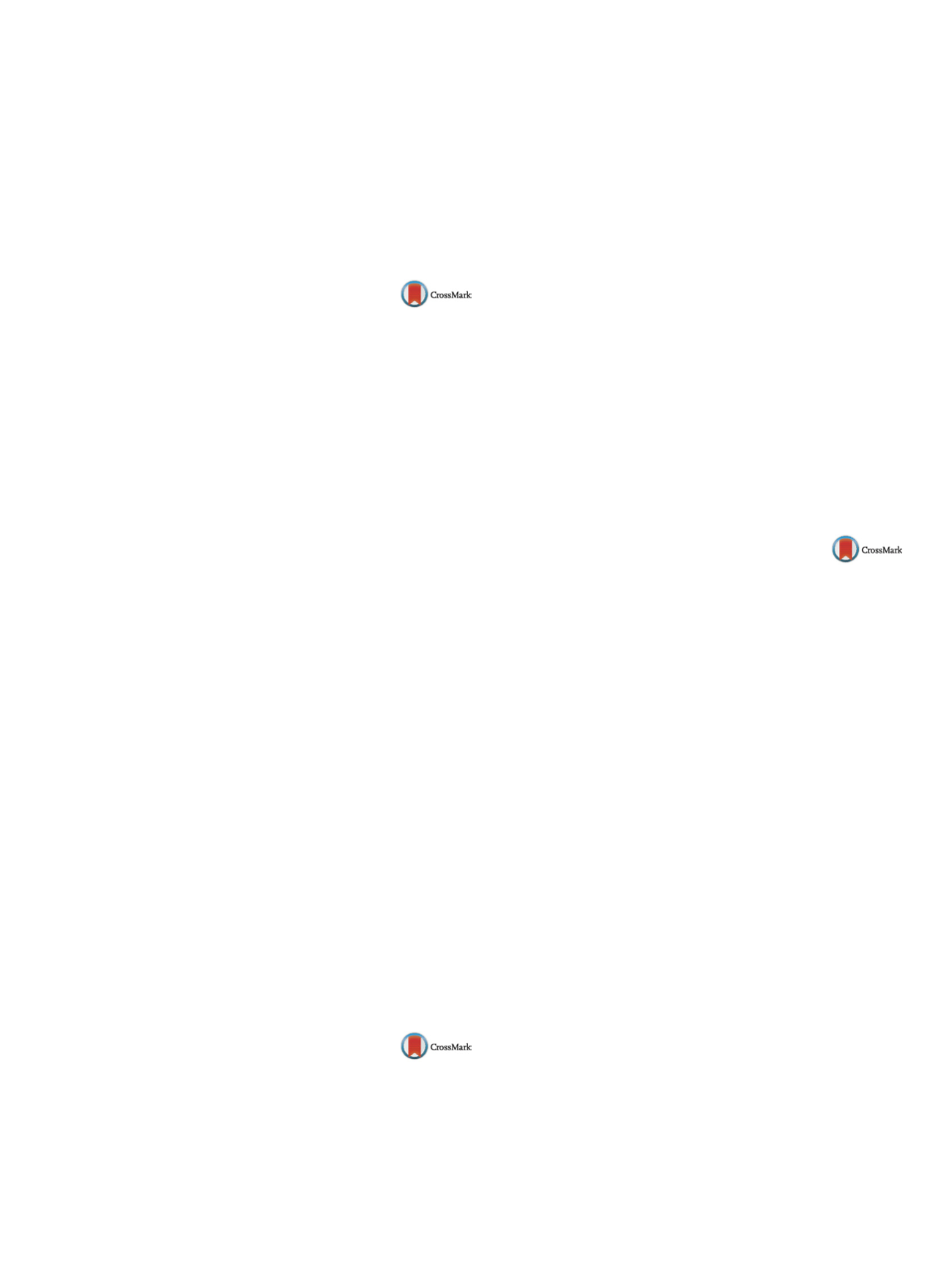

25th European Congress of Psychiatry / European Psychiatry 41S (2017) S772–S846
S817
Conclusions
It is determined whether the Czech version of the
CAPE has sufficient reliability and validity to be recommended for
research purposes. It is expected that further study of the CAPE as
well as the introduction of additional tools will motivate the stan-
dardization of research, diagnosis and prevention of schizophrenia
spectrum disorders in the Czech Republic.
Disclosure of interest
The authors have not supplied their decla-
ration of competing interest.
http://dx.doi.org/10.1016/j.eurpsy.2017.01.1588EV1259
Social and nonsocial cognitive
functions in patients with
schizophrenia: A comparative
neuropsychological and
neurophysiological study
M.A. Khalil
1 ,∗
, A.A. Saleh
1, N.M. El-Fayoumy
2, S.M. Gohar
11
Faculty of Medicine, Cairo University, Egypt, Psychiatry, Giza, Egypt
2
Faculty of Medicine, Cairo University, Egypt, Clinical
Neurophysiology Department, Giza, Egypt
∗
Corresponding author.
Background
Patients with schizophrenia suffer from cognitive
deficits in seven domains in addition to social cognition. P300
latency and amplitude have been linked in these patients to the
basic cognitive deficits.
Objectives
Comparing patients suffering from schizophrenia
with matched healthy subjects as regards auditory event related
potential tests as measured by P300.
Subjects and methods
Fifty-two subjects were divided into 2
groups: group (A): 27 patients with schizophrenia according to
the diagnostic and statistical manual of mental disorders-text
revised (DSM-IV TR). Those with current substance use, psychi-
atric disorders or organic disorders were excluded. Group (B): 25
healthy control subjects with negative history of substance and
psychiatric disorders. Patients were assessed using Positive and
Negative Symptom Scale (PANSS) for severity of psychotic symp-
toms, Addenbrook’s Cognitive Examination Revised (ACE-R) for
basic cognitive, reading themind in the eye test for social cognition,
P300 and electro-encephalography (EEG)
Results
The two groups were different significantly in ACE total
and its subtests measuring attention-orientation, memory, lan-
guage, visuospatial and reading the mind in the eye test for social
cognition scores with patients showing lower scores (
P
= 0.000,
0.012, 0.000, 0.038, 0.041 and 0.001 respectively). Control group
had higher amplitude of P300 and shorter latency than patients
(
P
= 0.003 and 0.005 respectively). P300 amplitude correlated
positively with visuospatial memory (
P
= 0.015). PANSS general
pathology scale correlated positively with duration of untreated
psychosis (
P
= 0.029) and with fluency (
P
= 0.047).
Conclusion
Patients with schizophrenia differ from controls in
P300.
Disclosure of interest
The authors have not supplied their decla-
ration of competing interest.
http://dx.doi.org/10.1016/j.eurpsy.2017.01.1589EV1260
Influence of clozapine to modified
electroconvulsive therapy in the
treatment resistant schizophrenia
Y. Kikuchi
∗
, T. Kanbayashi , T. Shimizu
Akita University School of Medicine, Department of Neuropsychiatry,
Akita University Graduate School of Medicine, Akita, Japan
∗
Corresponding author.
Introduction
Clozapine is one of the most effective drugs for
the treatment resistant schizophrenia (TRS). It was reported that
modified electroconvulsive therapy (mECT) may be an effective
clozapine augmentation strategy in TRS.
Objective
The objective of this study was to investigate the influ-
ence of clozapine to mECT in the TRS.
Methods
Forty-seven patients were recruited in this study, but
eight patients were excluded because clozapine was discontinued
by reason of side effects. Ultimately, 39 patients were enrolled.
Results
Seventeen patients receivedmECT before clozapine ther-
apy. Two patients continuedmECT after starting clozapine therapy.
There was a significant difference between before–after clozap-
ine therapy (
2
test,
P
<
0.01). Intermittent mECT was performed
for 3 patients before clozapine and for one patient after starting
clozapine.
Discussion
This result suggests that clozapine therapy reduces
mECT. In Japan, the first-line treatment for TRS is CLO. mECT is
recommended for clozapine resistant schizophrenia patients. Pre-
scription of CLO is limited in the part of medical facility because
all physicians who prescribe clozapine must be registered with the
clozaril patient monitoring service in Japan. It is considered that
mECT is more readily selected than clozapine therapy. Therefore,
the number of mECT is not reduced generally.
Conclusion
Clozapine therapy reduces the necessity of mECT.
Disclosure of interest
The authors have not supplied their decla-
ration of competing interest.
http://dx.doi.org/10.1016/j.eurpsy.2017.01.1590EV1261
Serum 25-OH vitamin D level in
patients with schizophrenia spectrum
disorders
M. Kopecek
∗
, D. Protopopova , P. Knytl , B. Kohutova , J. Hanka ,
P. Mohr
National Institute of Mental Health Czech Republic, NIMH Clinical
Center, Klecany, Czech Republic
∗
Corresponding author.
Introduction
25-OH vitamin D level is an immediate precursor
metabolite of the active form of vitamin D that leads to expression
of more than 200 genes.
Aims
The aim of our study was to examine 25-OH vitamin D defi-
ciency (<50nmol/L) and its relationship to demographic factors in
recently hospitalised patients with schizophrenia spectrum disor-
ders (SSD).
Methods
We assessed 25-OH vitamin D serum level in 41 SSD
patients (54% of males, 46% with first episode, 63% during sunny
season [May to October]), mean age 30
±
10.4 years, within first
days of hospitalization. The serum 25-OH vitamin D level was
analysed with electrochemiluminiscence, using imunoanalysators
Elecsys Roche.
Results
The serum level was significantly higher in sunny sea-
son (41.3
±
27.2 nmol/L) than in November to April (28.4
±
11.2
nmol/L):
t
-test,
P
< .05. Sixty-nine percent of patients suffered from
25-OH vitamin D deficiency (< 50nmol/L) in May to October and
100% during November to April. The 25-OH vitamin D serum levels
were not different between males and females, or between first-
episode and multiple-episode patients. No significant correlation
between age and 25-OH vitamin D level was found.
Conclusions
The high prevalence of 25-OH vitamin D deficiency
(< 50nmol/L) suggests that some patients with SSD may benefit
from vitamin D supplementation.
Funding
This study is a result of the research funded by the
project Nr. LO1611 with a financial support from the MEYS under
the NPU I program.
Disclosure of interest
The authors have not supplied their decla-
ration of competing interest.
http://dx.doi.org/10.1016/j.eurpsy.2017.01.1591

















